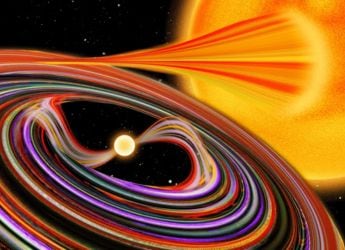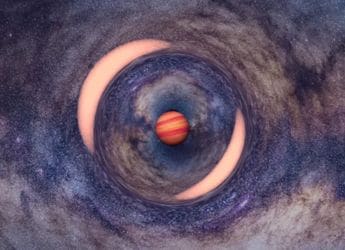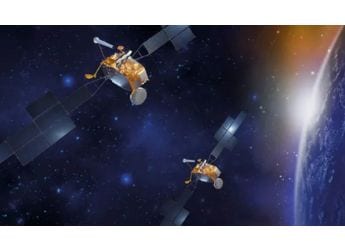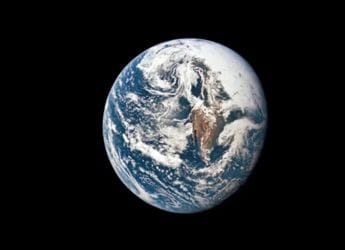- Home
- Science
- Science News
- Nasa's Hubble Telescope Shows Formative Years of Quasars
Nasa's Hubble Telescope Shows Formative Years of Quasars

Hubble's sharp images unveil the chaotic collisions of galaxies that fuel quasars by feeding supermassive central black holes with gas.
"The Hubble observations are definitely telling us that the peak of quasar activity in the early universe is driven by galaxies colliding and then merging together," said Eilat Glikman of the Middlebury College in Vermont, US.
"We are seeing the quasars in their teenage years, when they are growing quickly and all messed up," Glikman noted.
Discovered in the 1960s, a quasar, contraction of "quasi-stellar object," pours out the light of as much as one trillion stars from a region of space smaller than our solar system.
The source of the light is a gusher of energy coming from supermassive black holes inside the cores of very distant galaxies.
"The new images capture the transitional phase in the merger-driven black hole scenario," Glikman noted.
"We've been trying to understand why galaxies start feeding their central black holes, and galaxy collisions are one leading hypothesis. These observations show that the brightest quasars in the universe really do live in merging galaxies," said co-investigator Kevin Schawinski of the Swiss Federal Institute of Technology Zurich.
The overwhelming glow of the quasar drowns out the light of the accompanying galaxy, making the signs of mergers difficult to see.
Glikman used Hubble's sensitivity at near-infrared wavelengths of light to see the host galaxies by aiming at quasars that are heavily shrouded in dust.
The dust dims the quasar's visible light so that the underlying galaxy can be seen.
As galaxies merge, gravitational forces cause the gas in the disks of the colliding galaxies to fall directly toward the supermassive black hole.
Catch the latest from the Consumer Electronics Show on Gadgets 360, at our CES 2026 hub.
Related Stories
- Samsung Galaxy Unpacked 2025
- ChatGPT
- Redmi Note 14 Pro+
- iPhone 16
- Apple Vision Pro
- Oneplus 12
- OnePlus Nord CE 3 Lite 5G
- iPhone 13
- Xiaomi 14 Pro
- Oppo Find N3
- Tecno Spark Go (2023)
- Realme V30
- Best Phones Under 25000
- Samsung Galaxy S24 Series
- Cryptocurrency
- iQoo 12
- Samsung Galaxy S24 Ultra
- Giottus
- Samsung Galaxy Z Flip 5
- Apple 'Scary Fast'
- Housefull 5
- GoPro Hero 12 Black Review
- Invincible Season 2
- JioGlass
- HD Ready TV
- Laptop Under 50000
- Smartwatch Under 10000
- Latest Mobile Phones
- Compare Phones
- Motorola Signature
- Vivo Y50e 5G
- Vivo Y50s 5G
- Realme 16 Pro+ 5G
- Realme 16 Pro 5G
- TCL Nxtpaper 70 Pro
- OPPO A6 Pro 5G
- Honor Power 2
- Lenovo Yoga Slim 7x (2025)
- Lenovo Yoga Slim 7a
- Realme Pad 3
- OPPO Pad Air 5
- Xiaomi Watch 5
- Huawei Watch 10th Anniversary Edition
- Acerpure Nitro Z Series 100-inch QLED TV
- Samsung 43 Inch LED Ultra HD (4K) Smart TV (UA43UE81AFULXL)
- Asus ROG Ally
- Nintendo Switch Lite
- Haier 1.6 Ton 5 Star Inverter Split AC (HSU19G-MZAID5BN-INV)
- Haier 1.6 Ton 5 Star Inverter Split AC (HSU19G-MZAIM5BN-INV)

















